The central bank community
From its establishment in 1930, the BIS has been the prime meeting place for central bankers. Today, the BIS has 63 shareholding member central banks, who collectively hold all the votes at the Bank's Annual General Meeting. This timeline lists the main events in the BIS's institutional history, and shows how it grew from a predominantly European organisation into a truly global one.
1870 – 1929

On 28 June 1919, the Treaty of Versailles was signed at the eponymous palace near Paris, in the Hall of Mirrors. It brought the First World War formally to an end and imposed a heavy reparations burden on Germany. The reparations issue was a major source of contention between the Great Powers throughout the 1920s.
1929 – 1930
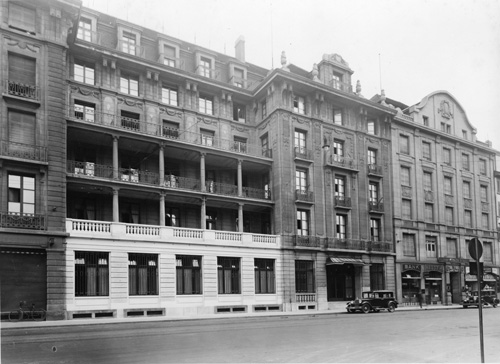
The BIS finds its home in the former Savoy Hôtel de l'Univers opposite the central railway station in Basel. The Bank will remain in this neoclassical building until the mid-1970s.
1931 – 1945
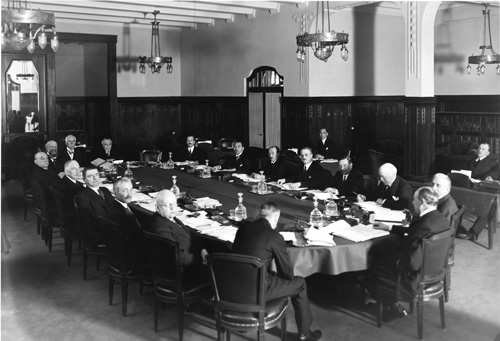
A BIS Board of Directors meeting in Basel, 1931.
1946 – 1958
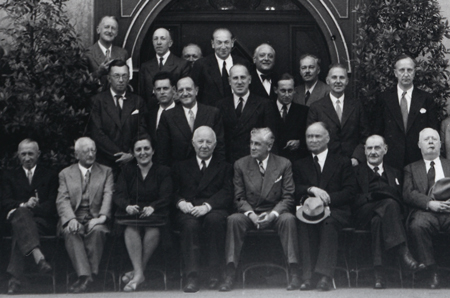
Participants in the BIS Annual General Meeting pose in front of the Schützenhaus Restaurant in Basel, May 1948.
1958 – 1973
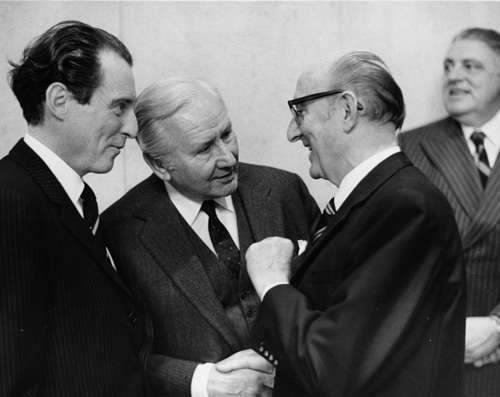
Michael Dealtry (BIS), Leslie O'Brien (Bank of England) and Otmar Emminger (Bundesbank) in discussion during a BIS meeting, 1970s.
1973 – 1993

Construction of the BIS Tower, the Bank's new offices, designed by Basel architect Martin Burckhardt, starts in 1972 and is completed in 1977.
1994 – 2020
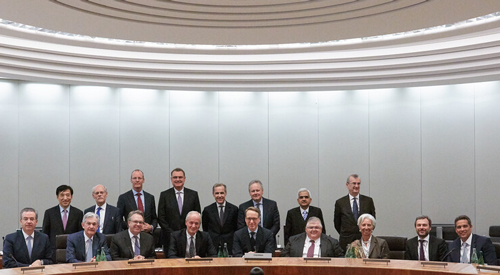
The BIS Board of Directors gathered in Basel, January 2020.
